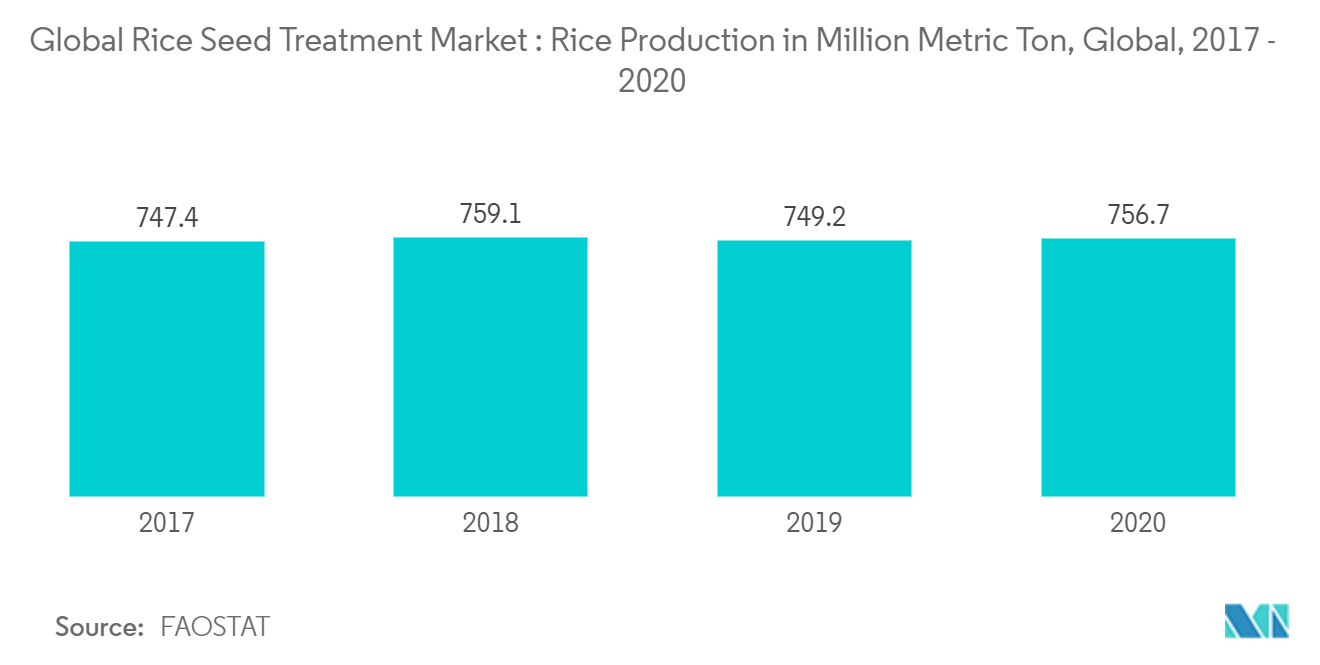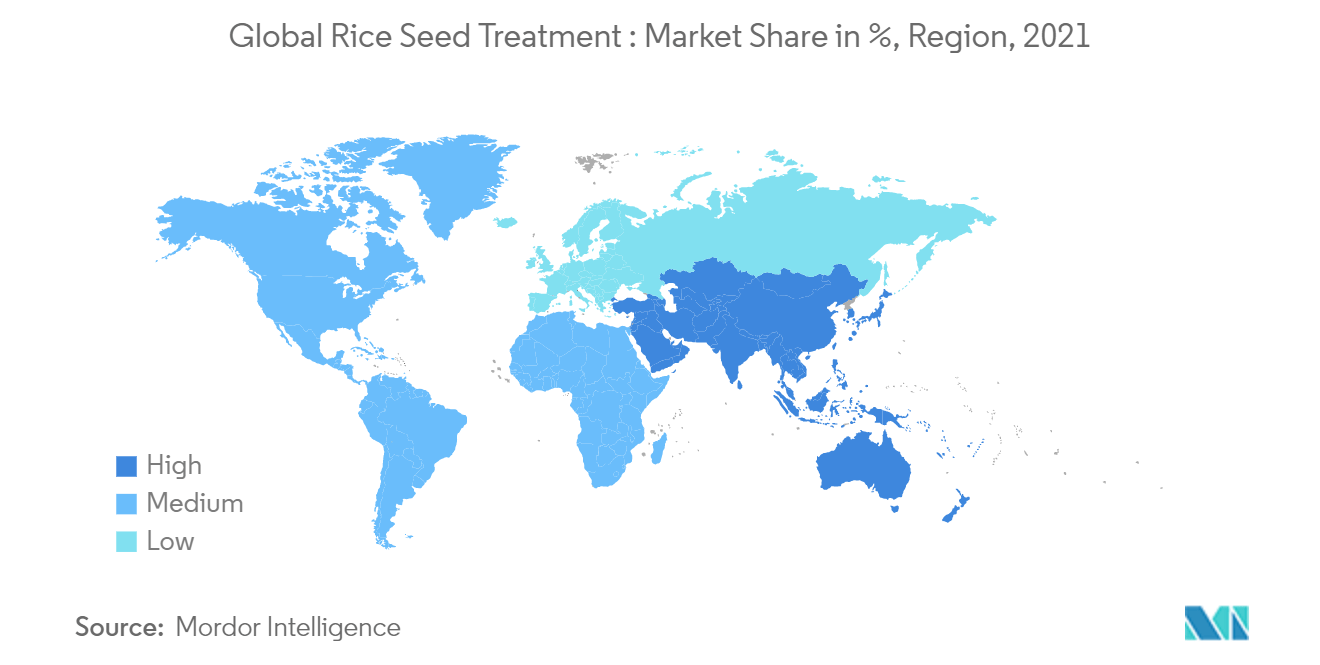Market Trends of Rice Seed Treatment Industry
This section covers the major market trends shaping the Rice Seed Treatment Market according to our research experts:
Increasing Demand for and Adoption of High-quality Seeds
Farmers are increasingly acknowledging seed treatment as a mode to protect high investments made on good quality seeds. Owing to the increasing demand for high-quality seeds with desirable agronomic traits, the cost of seeds is increasing. Both companies and farmers are ready to spend extra on seed treatment solutions to save costly high-quality seeds.
The introduction of GM seeds added high value to seeds, with the cost of seeds being high and sometimes being twice as much as that of non-GM seeds. Earlier, a growth of 85% was expected by farmers as some seeds would rot or be destroyed by insects. With changing trends and 100% seed emergence expectation by growers even in unfavorable conditions, seed treatment has become a necessity. Top players in the market are constantly focusing on developing superior quality seeds through modern breeding techniques, thereby increasing the cost of the seeds.
African countries do not produce enough rice and are reliant on imports. One such country is Sierra Leone. Hence, to become self-sufficient, the country's government is adopting a few strategies. A promising solution is the dissemination of high-yielding rice varieties, such as the New Rice of Africa (NERICA), which have become known as the miracle crop for African rice farmers because they combine the genetic qualities of Asian rice (high yielding) and African rice (high resistance to drought and disease). However, current estimates suggest only 2% of farmers in the country use NERICAs. This is due to the cost of improved varieties that cost 40-100% more than traditional ones, representing a significant barrier to adoption among poor farmers. Hence, due to the high cost of these hybrid varieties, there is an opportunity for paddy farmers to use treated seeds at an affordable cost. This, in turn, is expected to lead to the positive growth of the rice seed treatment market in the coming years.

Asia-Pacific Dominates the Market
As rice is the staple food and most prominent crop grown, the Asia-Pacific region was observed to be the largest and fastest-growing region with the largest share in 2020. In the region, China is the largest and fastest-growing country, followed by India and Japan.
According to the Ministry of Agriculture of China, the rice seed industry is actively seeking differentiated commercial varieties and market positioning to make up for the shortage of high-yield and low-resistance varieties (especially rice blasts). China is also focusing on enhancing the value of seeds. This is leading to an increase in the number of hybrid rice varieties in the country. In 2018, an increase of 2.55% was witnessed in the hybrid rice seed production compared to the value registered in 2017. This is expected to impact the seed treatment market as well positively. Also, India is the second-largest producer and largest exporter of rice across the world. In India, rice is grown under widely varying conditions of altitude and climate. The rising production of rice in India, owing to the favorable climate and practices, is boosting the demand for rice seed treatment chemicals in the country. Overall, the rice seed treatment market in the region is expected to grow steadily in the coming years due to the rising food demand and increasing research and development to introduce new innovative products in the market.

